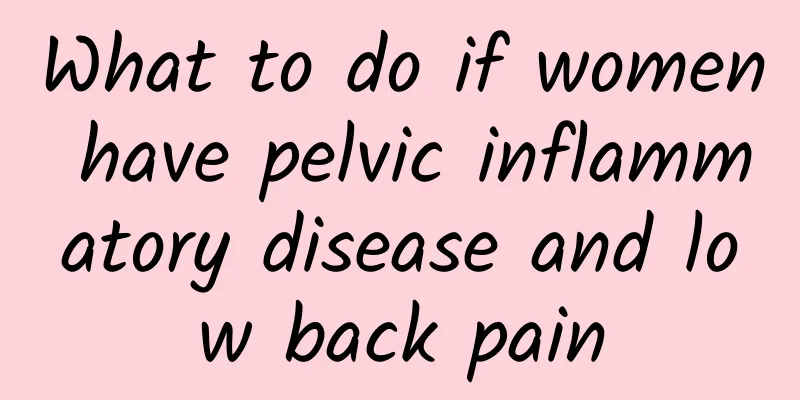How long after menopause should I remove the IUD?

|
After menopause, the estrogen level in women's bodies drops sharply, so the uterus will gradually shrink and shrink. Therefore, women who have had an IUD placed need to remove it within two years after menopause, and the best time is within 6-12 months after menopause. Because at this time the uterus and cervix have not shrunk significantly, removing the IUD during this period is beneficial to the doctor's surgical operation and also reduces the patient's pain. Before removing the IUD, postmenopausal women need to undergo a color Doppler ultrasound examination of the uterine appendages to determine the location of the IUD, the size of the uterus and the cervix. If a woman is sensitive to pain, she can also use anesthetic drugs to achieve the purpose of painless IUD removal. The uterus has not completely atrophied within two years after menopause. Removing the IUD during this period greatly shortens the time of the operation and minimizes the damage to the cervix and uterine cavity. If the IUD is removed too long after menopause, the uterus and cervix have atrophied, which will increase the difficulty of the doctor's operation. Some doctors may not even be able to remove the IUD from the cervical opening, but need a laparotomy to remove it. After removing the IUD, you cannot do strenuous exercise, you cannot have sex within half a month, and you can only take a shower, not a bath, to avoid causing serious infection in the uterine cavity. Before removing the IUD, postmenopausal women need to undergo a color Doppler ultrasound examination of the uterine appendages to determine the location of the IUD, the size of the uterus and the cervix. If a woman is sensitive to pain, she can also use anesthetic drugs to achieve the purpose of painless IUD removal. The uterus has not completely atrophied within two years after menopause. Removing the IUD during this period greatly shortens the time of the operation and minimizes the damage to the cervix and uterine cavity. If the IUD is removed too long after menopause, the uterus and cervix have atrophied, which will increase the difficulty of the doctor's operation. Some doctors may not even be able to remove the IUD from the cervical opening, but need a laparotomy to remove it. After removing the IUD, you cannot do strenuous exercise, you cannot have sex within half a month, and you can only take a shower, not a bath, to avoid causing serious infection in the uterine cavity. Therefore, if there is still sterilization in the uterine cavity of postmenopausal women, they need to go to the hospital to remove it in time. The later the contraceptive ring is removed, the greater the harm to their body. |
>>: What are the symptoms of chronic pelvic inflammatory disease
Recommend
What lifestyle habits are likely to cause cervicitis in women?
There are many living habits that can easily lead...
Does physical therapy for severe cervical erosion affect fertility?
Does physical therapy for severe cervical erosion...
Do you know the three major hazards of uterine fibroids?
The harm of uterine fibroids is what many women w...
Drinking warm water aids digestion and helps lose weight, and these 6 benefits are hard to hide! Xiao S and Jolin Tsai get up early and drink a cup of warm water to maintain good skin
As people age, the functions of their spleen and ...
How to Prevent Ovarian Cysts
How to prevent ovarian cysts? Most ovarian cysts ...
How to prevent the occurrence of endometrial thickening?
Nowadays, diseases in life are really hard to pre...
What are the folk prescriptions for TCM treatment of cervical erosion? Complete TCM prescriptions for treating cervical erosion
Women must never ignore the serious consequences ...
What is the cause of abnormal menstrual cycle?
What happens if my menstrual cycle is abnormal? A...
Patients with primary amenorrhea can use diet to relieve symptoms
Primary amenorrhea is a type of amenorrhea that c...
Study: Drinking pomegranate juice can reduce appetite by 20%
Do you still feel hungry no matter how much you e...
Lena: Golden Rule for Weight Loss: Lose 10kg
◇My way of playing with beauty: The part I am mos...
How much does uterine fibroid surgery cost? How much does uterine fibroid surgery cost?
How much does uterine fibroid surgery cost? Uteri...
What tests should be done for postmenopausal bleeding
Generally, women who have stopped menstruating fo...
Will sexual life cause cervical erosion? What are the factors that cause cervical erosion?
Cervical erosion is actually cervicitis, a common...
Can I eat ginseng after having an abortion? It is best not to eat it
After having an abortion, women are weak and lack...









